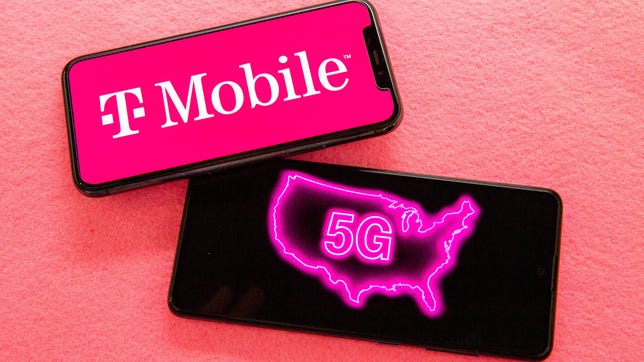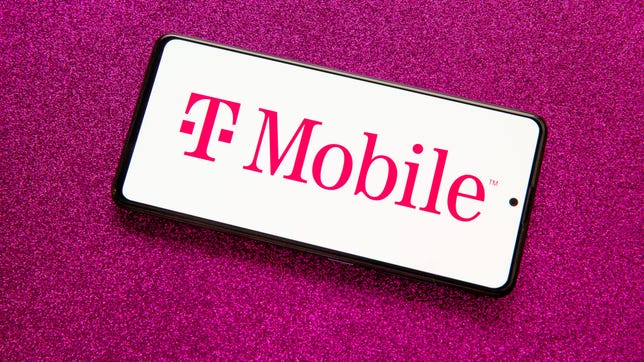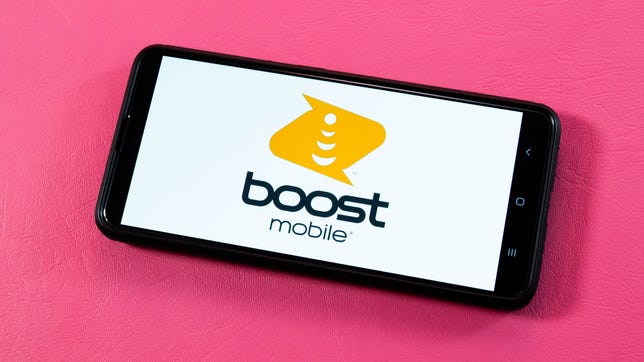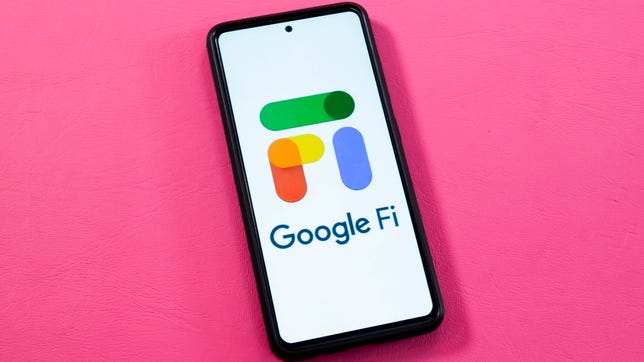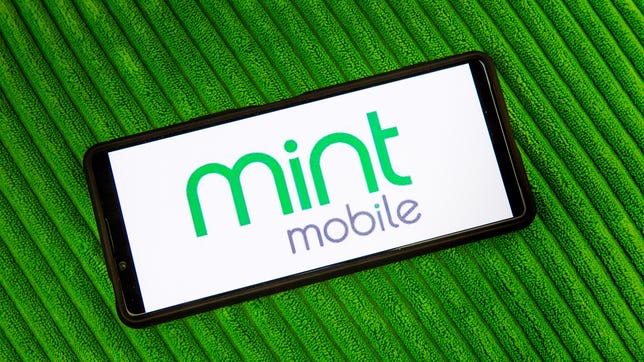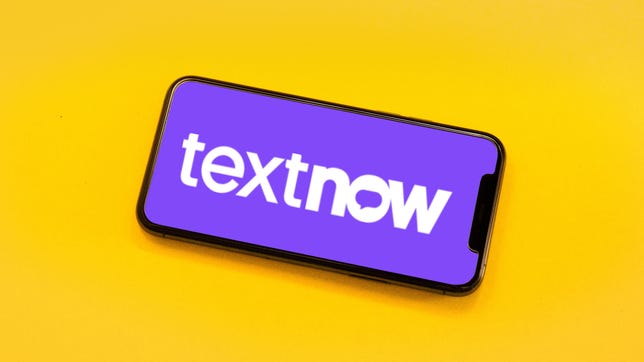Technologies
Best Cellphone Plans of 2023: Our Top Picks
A one-stop shop for figuring out which carrier is best for you.

Picking or changing a phone plan isn’t easy. There are overwhelming number of options from the three main players, AT&T, T-Mobile and Verizon; as well as an exponentially larger assortment from prepaid and smaller mobile virtual network operator options like Mint Mobile, Visible, Google Fi and more. Sorting through it all is a hassle, which could very well be why you’re paying more for service you don’t need — or are not maximizing what you are paying to get the best value for your money.
Let’s try and fix that. We’ve been covering the latest in wireless plans across a host of providers and plans — from breaking down how to switch carriers, to the top unlimited and prepaid plans to knowing which network the smaller carriers use. Here is our guide for sorting through the madness and some of our picks for what we think are the best unlimited and prepaid plans available right now.
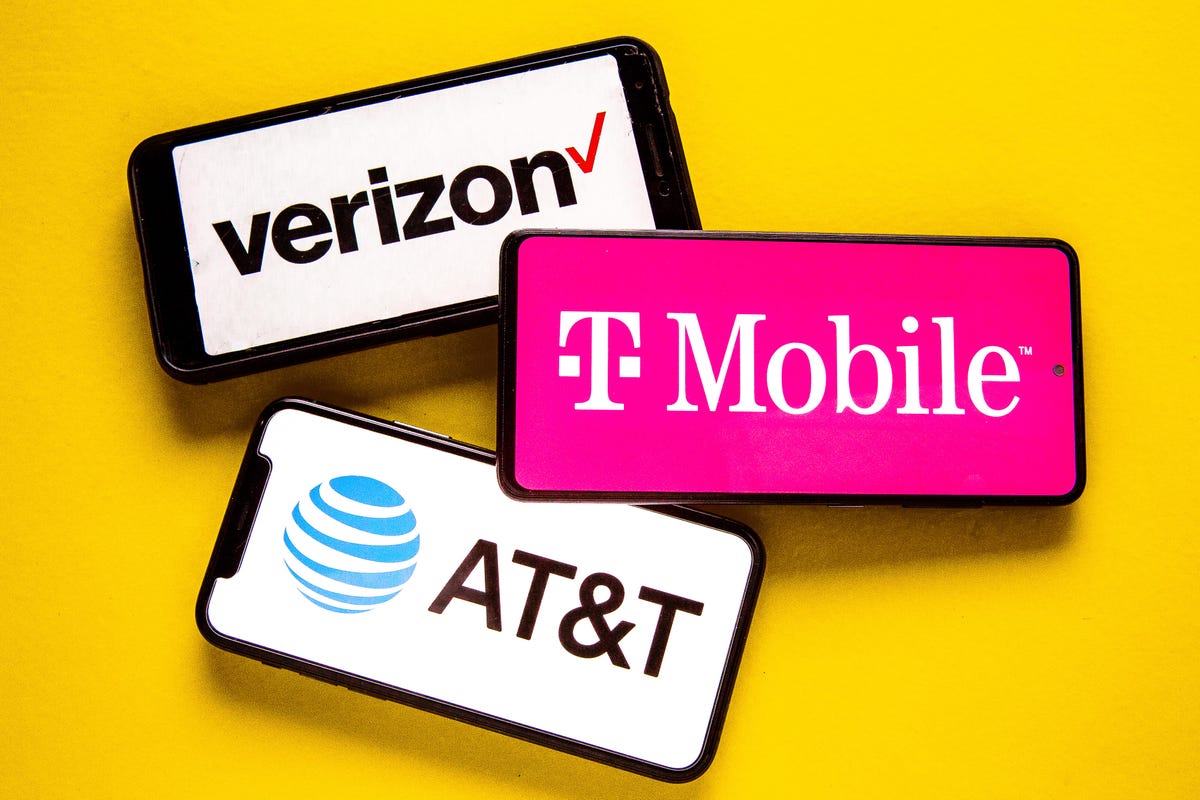
What’s the difference between «prepaid» and «postpaid» plans?
When choosing a phone plan there are generally two main options: a postpaid carrier like AT&T, Verizon and T-Mobile (plus cable options like Spectrum Mobile and Xfinity Mobile) and prepaid providers such as Mint Mobile, Metro by T-Mobile, Google Fi and Cricket.
The difference boils down to this: With postpaid you are paying for your plan after you’ve used your service, while prepaid lets you buy that allotment in advance.
Prepaid providers are generally cheaper than postpaid options, though they also often (but not always) are more limited when it comes to additional streaming perks, hotspot data or device discounts. To get a several hundred dollar trade-in credit toward a new iPhone, Pixel or Galaxy, you often will need to commit to a postpaid plan from one of the big three carriers and be willing to stay with that provider for 24 to 36 months.
All three of the major wireless carriers also offer a variety of discounts on the plan pricing depending on age, employment, military or veteran status or if you or someone on your family plan are a nurse, teacher or first responder. You can find those details here: AT&T, T-Mobile, Verizon.
What about networks?
Look at a zoomed-out map of the US on AT&T, T-Mobile or Verizon’s respective websites and you’ll likely see it pretty well colored in by their respective color. Zooming in is where things get a bit more complicated, which is why we can’t offer blanket recommendations for one carrier over another. T-Mobile’s service in New York may be excellent, but if you’re in a rural area in Colorado, Verizon could be more reliable.
All three, however, offer 5G and ever-increasing coverage and data speeds as they all ramp up deployments of the latest wireless flavor. It’s quite possible that a decade ago you left a network complaining about its weak service, but now it’s beefed itself up because of that race to acquire customers.
This is also why we recommend talking to friends, family or colleagues that have a different provider where you live, as locally your mileage may vary. You could also go to a carrier’s store and see if it offers any free ways to try out the service before switching over, such as T-Mobile’s Network Pass. Verizon now offers a similar 30-day «Test Drive» program, while the Cricket prepaid service has rolled out its own trial program that lets you sample parent AT&T’s network.
As for the smaller carriers, they often use the networks of the larger providers. This includes the prepaid options owned by the big carriers (AT&T owns Cricket, Verizon owns Tracfone, T-Mobile owns Metro) as well as smaller options like Mint Mobile (which runs on T-Mobile), Google Fi (which runs on T-Mobile and US Cellular) and Boost Mobile (which runs on AT&T, T-Mobile and parent company Dish’s 5G networks). We explain this all in more detail here.
Why get unlimited?
If you’re on T-Mobile, all of your plans are unlimited, and Verizon no longer lets new users sign up for a shared data plan. Only AT&T still offers some tiered data plans and… it’s not great.
It has a 4GB-per-line plan that runs $50 a month for one line ($160 for four lines). Each line here gets 4GB of data, but if you go over that threshold in a month you’re paying $10 for every 2GB. AT&T’s plan also does not include access to its 5G networks.
Although everyone’s wireless needs are different, for most we think unlimited plans make the most sense, especially when it comes to choosing a new plan.
AT&T’s basic unlimited plan, called Unlimited Starter, is $65 a month for one line or $140 for four lines.
If you have one or two lines and don’t use a lot of data, you may be fine with one of these plans, though if you have just one line we’d recommend switching over to AT&T’s $50-per-month Value Plus option or T-Mobile’s Base Essentials. Two lines of that T-Mobile plan runs $80 a month, which is $10 cheaper than two lines of AT&T’s 4GB plan and comes without the worry of navigating how much data you use.
Best Postpaid Phone Plans
Sarah Tew/CNET
T-Mobile has a cheaper unlimited plan for those who don’t need three or more lines. Called Base Essentials, this plan has unlimited talk, text and data including 5G. While the data is unlimited, only the first 20GB each month are at high speed — if you go over that threshold, your speeds will slow to 1.5Mbps for the remainder of your billing period.
While perks like free Netflix or the bundling of taxes and fees into the sticker price are not included, you do get unlimited hotspot at «3G speeds,» a free year of Paramount Plus, and unlimited talk, text and 2G data in Mexico and Canada.
Priced at $5 less per month for a single line than AT&T’s Value Plus plan, this could be a solid option for those looking for a single line without frills. The carrier also allows for multiple lines via this plan, with two lines running $80 a month (if you need three or more you may want to look at one of T-Mobile’s other plans, which could be cheaper thanks to various promotions the carrier regularly runs).
T-Mobile keeps this plan surprisingly under wraps, but you can find it by heading to the «Plans» section of its website and clicking «lowest priced plan.»
Sarah Tew/CNET
Those looking to save the most on unlimited service from the major carriers may be best with T-Mobile’s Essentials. Unlimited talk, text and data are included for all of the carrier’s base unlimited plans. In this price-focused comparison, T-Mobile’s option comes in at $60 for a single line, $5 a month cheaper than AT&T’s Unlimited Starter and $10 less than Verizon’s 5G Start.
In addition to being $5 less than AT&T’s option, T-Mobile’s Essentials includes unlimited mobile hotspot (albeit at slower «3G speeds»), giving you a little more flexibility. All three carriers offer 5G access with their base plans. We should note that Verizon’s 5G Start doesn’t support its fastest forms of 5G.
You can always reevaluate your options as the three major carriers roll out the latest updates to their respective 5G networks over the next couple of years.
The savings of T-Mobile’s plan also become more pronounced the more lines you add. Two lines of Essentials is $90 a month, while a similar offering from AT&T or Verizon runs $120 a month. Three lines will also run $90 at T-Mobile thanks to a promotion, compared to $135 monthly at AT&T or Verizon. The four-line option is $100 at T-Mobile, compared to $140 at the other carriers.
These prices do come with a couple of caveats: Unlike T-Mobile’s Magenta or Magenta Max plans, taxes and fees are not included in any of these prices, making the final total a little higher. All the deals also require that you set up AutoPay and paperless billing.
Sarah Tew/CNET
If you’re looking for freebies with your wireless service, Verizon has one of the most aggressive bundles out there with its Play More plan ($80 a month for one line; $45 a month if you have four lines, you aren’t bringing your own phone and you’re switching to the carrier).
Verizon’s Play More plan includes unlimited talk, text and data and 25GB of higher-speed 5G and 4G LTE hotspot data. Among the perks are a free subscription to the Disney bundle (Disney Plus, ESPN Plus and Hulu) and either Apple Arcade or Google Play Pass.
All told, the perks quickly add up if you use any of these services. The Disney bundle normally runs $14 a month, and Apple Arcade and Google Play Pass each cost $5.
That’s potentially $19 a month in services. Verizon offers these benefits as part of its Play More and Get More plans, but for most people, the Play More choice is the best fit. Get More runs an extra $10 a month ($90 a month for a single line, $220 a month for four lines) and adds an extra 25GB of high-speed hotspot data, 50% off a connected device (like a monthly plan for tablet or smartwatch) and 600GB of Verizon’s Cloud Storage. Get More also includes a subscription to Apple Music, normally $10 a month.
Something to note: These perks are often limited to one per account, so only one line on a family plan would qualify to open a Disney Plus account and get it covered by the carrier.
Verizon also lets you mix and match plans when you have multiple lines.
If you have four people on your family plan, only one needs to have Play More to get the perks for the whole family. The rest can be on the cheaper 5G Start, which would make four lines $140 a month — as opposed to $180 a month if all four lines have Play More.
You can also combine these plans with Verizon’s other discounts for teachers, nurses, military and first responders to save a bit more.
Lastly, Verizon has a «One Unlimited for iPhone» plan geared toward Apple fans that includes the Apple One bundle (Apple Music, Apple TV Plus, Apple Arcade and iCloud storage). The pricing on that plan ($90 per month for one line, $200 a month for four lines) is higher than Play More, however, and the One plan lacks the ability to put other lines onto cheaper plans. Combining those two factors makes this option a worse deal than the Play More plan.
Best Prepaid Phone Plans
Sarah Tew/CNET
Boost Mobile has added an unlimited plan that offers unlimited talk, text and data to new users for $25 per month with taxes and fees included. Unlike Mint Mobile’s 12-month plan, our previous pick in this slot, Boost’s plan isn’t tied to 12-month increments. You do, however, need to be a new Boost customer to get this offer.
The plan includes 5G access and 30GB per month of high-speed data (if you blow through that, your data will slow until your next billing month starts). Hotspot is included as well, with that data pulling from your high-speed allotment. One thing worth noting: You need to set up automatic payments to get the $25-per-month rate.
Sarah Tew/CNET
Google’s cellphone service got a pricing revamp that makes it a much more appealing alternative to major providers. For a family of four, you can now get its Simply Unlimited plan for $80 per month ($20 per month, per line) which includes not only unlimited talk, text and data but also 5GB of mobile hotspot access. There also is free roaming in Canada and Mexico, though taxes and fees are not included in the sticker price.
Google Fi runs on T-Mobile’s and US Cellular’s networks and its service includes 5G access, though we should note that iPhones running on Google Fi can’t use 5G.
Sarah Tew/CNET
When it comes to data under 10GB, Mint once again has the best value if T-Mobile’s network is solid in your area. Whereas Metro and Cricket charge $40 per month for one line and Boost has a $35 plan for 10GB of data, Mint beats them all on price.
Getting 10GB of 4G LTE/5G monthly data is $20 per month at Mint when purchased in 12-month increments for new users. After that, you can buy three more months at $35 per month ($105 total), six months at $25 per month ($150 total) or another year at $20 per month ($240 total).
Sarah Tew/CNET
If you’re looking for service for a backup phone that’s rarely used, TextNow has a free plan. Running on T-Mobile’s network, the service offers free unlimited talk and unlimited texting, though ads are placed in its app which you use to call and text people. There isn’t any data included with this option and removing the ads without adding data would run you $10 a month. If you want to watch YouTube, FaceTime, or surf the web make sure to connect to Wi-Fi.
Text messages are also done through the company’s TextNow app, not through iMessage or WhatsApp which makes sense as those services require data.
Getting 1GB of high-speed mobile data starts at $9 a month, with the company throttling you down to «2G speeds» if you use that up before your billing cycle resets. If you are largely on Wi-Fi, this could be a good option. 2GB runs $16 a month, with the company offering up to 5GB of high-speed data for $28 a month.
Technologies
The Most Exciting Video Game Rumors and Leaks Ahead of 2026
Technologies
Today’s NYT Mini Crossword Answers for Wednesday, Dec. 17
Here are the answers for The New York Times Mini Crossword for Dec. 17.

Looking for the most recent Mini Crossword answer? Click here for today’s Mini Crossword hints, as well as our daily answers and hints for The New York Times Wordle, Strands, Connections and Connections: Sports Edition puzzles.
Need some help with today’s Mini Crossword? Read on. And if you could use some hints and guidance for daily solving, check out our Mini Crossword tips.
If you’re looking for today’s Wordle, Connections, Connections: Sports Edition and Strands answers, you can visit CNET’s NYT puzzle hints page.
Read more: Tips and Tricks for Solving The New York Times Mini Crossword
Let’s get to those Mini Crossword clues and answers.
Mini across clues and answers
1A clue: Nod (off)
Answer: DOZE
5A clue: Naval submarine in W.W. II
Answer: UBOAT
7A clue: Tricky thing to do on a busy highway
Answer: MERGE
8A clue: Heat-resistant glassware for cooking
Answer: PYREX
9A clue: Put into groups
Answer: SORT
Mini down clues and answers
1D clue: Break up with
Answer: DUMP
2D clue: Falls in line, so to speak
Answer: OBEYS
3D clue: Legendary vigilante who cuts a «Z» with his sword
Answer: ZORRO
4D clue: Rarin’ to go
Answer: EAGER
6D clue: Common reminder for an upcoming appointment
Answer: TEXT
Don’t miss any of our unbiased tech content and lab-based reviews. Add CNET as a preferred Google source.
Technologies
You Can Watch an Exclusive Avatar: Fire and Ash Scene on TikTok Right Now
Disney and TikTok partner on an immersive content hub for James Cameron’s latest movie about the alien Na’vi.
If you’re not quite ready to head to the theater to watch Avatar: Fire and Ash, an exclusive scene preview might sell you on the visual spectacle. As part of a new collaboration with the social media giant, Disney is posting snippets of its new movie to its TikTok account.
This scene isn’t part of any trailer and won’t be posted to other social media accounts, making TikTok the only place you can view it — unless you buy a movie ticket. A first look at the new movie’s scenes isn’t the only Avatar-related bonus on the social media platform right now, either. TikTok has partnered with the house of mouse to bring an entire «immersive content hub» to the app.
A special section of TikTok includes quizzes and educational videos that explore the alien world of Pandora shown off in the movies. On TikTok, you can take a personality quiz to find out what Na’vi clan you most closely align with and unlock a special profile picture border to use on your account.
Science and fiction blend together with a series of videos from real doctors who explain the basis for some of Avatar’s world-building. If you want to learn about exoplanets or how realistic the anatomy of the movie’s alien animals is, these videos will feed your brain while still providing entertainment value.
Perhaps the most enticing part of Disney’s latest social media collaboration is the opportunity for fans to win prizes and trips. TikTok creators who make edits with the #TikTokAvatarContest hashtag are entered into a competition to win Avatar merchandise. The biggest winners will be able to take a trip to visual effects studio Wētā Workshop in New Zealand or visit Avatar director James Cameron’s Lightstorm Entertainment Studio in Los Angeles.
Avatar: Fire and Ash is the third installment in director Cameron’s cinematic passion project. While the first Avatar movie was released in 2009, Cameron didn’t release another entry in the franchise until 2022. In total, there is a five-movie arc planned for the indigo alien Na’vi on the moon of Pandora.
The Avatar movies are known for pushing the boundaries of CGI visual effects in cinema. They are also historically big winners at the box office: the original Avatar is the highest-grossing film of all time, earning $2.9 billion across its theatrical releases. Its sequel, Avatar: The Way of Water, is the third-highest-grossing film of all time, trailing Avengers: Endgame. You can stream those movies on Disney Plus.
It remains to be seen whether Avatar: Fire and Ash will financially live up to its predecessors. The film currently has mixed reviews from critics on Rotten Tomatoes.
-

 Technologies3 года ago
Technologies3 года agoTech Companies Need to Be Held Accountable for Security, Experts Say
-

 Technologies3 года ago
Technologies3 года agoBest Handheld Game Console in 2023
-

 Technologies3 года ago
Technologies3 года agoTighten Up Your VR Game With the Best Head Straps for Quest 2
-

 Technologies4 года ago
Technologies4 года agoBlack Friday 2021: The best deals on TVs, headphones, kitchenware, and more
-

 Technologies4 года ago
Technologies4 года agoVerum, Wickr and Threema: next generation secured messengers
-

 Technologies4 года ago
Technologies4 года agoGoogle to require vaccinations as Silicon Valley rethinks return-to-office policies
-

 Technologies4 года ago
Technologies4 года agoOlivia Harlan Dekker for Verum Messenger
-

 Technologies4 года ago
Technologies4 года agoiPhone 13 event: How to watch Apple’s big announcement tomorrow

